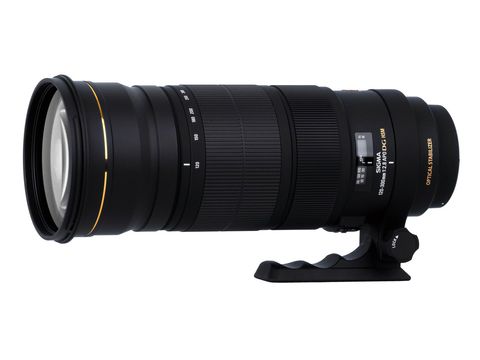TechRadar Verdict
Pros
- +
Optical stabilisation
- +
Solid, weather-proof construction
- +
Available in Canon, Nikon and Sigma mounts
- +
Superb image quality
- +
Reasonable price
Cons
- -
Heavy and unwieldy at times
- -
No rubber seal on lens mount
- -
Tripod mount isn't great
Why you can trust TechRadar
High-quality telephoto lenses for DSLRs are tricky to buy. They're a huge investment, with prices starting at around £1,500 and heading sharply skywards. There are also considerable usability problems: long focal lengths require fast shutter speeds, which require large apertures, which all results in lots of heavy, fine-tuned and extremely expensive glass.
The Sigma 120-300mm f/2.8 EX DG OS HSM is a cheaper option than Nikon and Canon's astronomically expensive (although superb) pro lenses. We got ours from Warehouse Express, where you can pick one up with a three-year warranty for £2,099 in the UK. In the US they're priced at around $3,199 - far cheaper than a 300mm f/2.8 lens from Nikon or Canon. But is it any good?
The new Sigma 120-300mm f/2.8 EX DG OS HSM replaces Sigma's older, almost-identically specified lens. With the new model you get optical stabilisation (OS), and the whole thing adds up to a lens that is far from a lightweight.
It's heavier, for instance, than the Canon 300mm f/2.8 prime lens by nearly 600g, which isn't exactly a welterweight at 2.4kg. The Sigma is twice as heavy as the Canon 100-400mm f/5.6, although in fairness it's also two stops faster at its telephoto end.
Can you shoot with the Sigma 120-300mm f/2.8 EX DG OS HSM handheld? Just about, but don't expect to be able to train it on a subject for particularly long - a monopod is important unless you want aching arms. Attach it to a support and it feels well-balanced and easy to manoeuvre.
Dave is a professional photographer whose work has appeared everywhere from National Geographic to the Guardian. Along the way he’s been commissioned to shoot zoo animals, luxury tech, the occasional car, countless headshots and the Northern Lights. As a videographer he’s filmed gorillas, talking heads, corporate events and the occasional penguin. He loves a good gadget but his favourite bit of kit (at the moment) is a Canon EOS T80 35mm film camera he picked up on eBay for £18.

